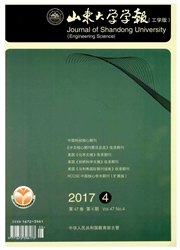

 中文摘要:
中文摘要:
为有效检测竖向预应力筋的有效张拉力并提高竖向预应力的施工质量,解决箱梁由于竖向预应力损失过大而导致箱梁腹板开裂的工程难题,基于结构动力学理论,视竖向预应力精轧螺纹钢筋外露段为悬臂梁,将锚固段用一个刚臂和两个弹性支承模拟,建立竖向预应力筋的平面弹性支承模型。结合模型试验数据,建立精轧螺纹钢筋张拉力P与平面弹性支承刚度K的非线性关系模型。通过室内模型试验及锚固段刚度增大系数法验证本研究方法的有效性,并进行工程应用。引入竖向预应力张拉力无损检测方法进行箱梁竖向预应力张拉施工质量的监测,张拉力合格率由58.0%提高至96.8%,有效提高了竖向预应力的施工质量。同时提出了箱梁施工期需要提高锚垫板安装精度的工程措施。
 英文摘要:
英文摘要:
In order to effetively detect the tension of vertical prestressing bars to improve the construction quality and to solve the engineering problem of the cracking at box girder webs caused by vertical excessive prestress loss, the exposed section of fine rolled twisted bar was assumed as a cantilever beam based on the dynamic theory, and the anchoring sec- tion of vertical prestressed steel was simulated by one rigid arm and two elastic supports. Then, the plane elastic sup- porting model was established. The nonlinear model between tension P of fine rolled twisted bar and elastic support stiffness K was put forth based on the experiment data of this model. The proposed method was verified by model test and a method based on flexural rigidity Of the exposed segment in the anchorage zone, and this method was applied in the actual bridge engineering. The non-destructive detection method of vertical prestressing was used at the construction period of box girders, the qualified rate of vertical prestress increased from 58.0% to 96. 8%, and the construction quality of vertical prestressing was effectively improved. Based on this research, the engineering measures were pro- posed to improve the anchor plate mounting precision.
 同期刊论文项目
同期刊论文项目
 同项目期刊论文
同项目期刊论文
 期刊信息
期刊信息
